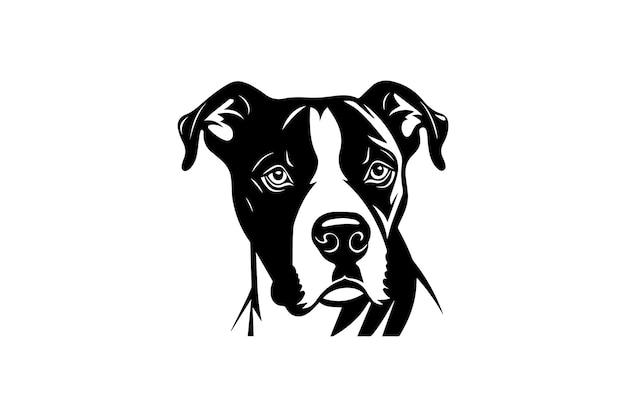Have you ever encountered pits, holes, or gaps in your 3D prints? It can be frustrating when your carefully designed model doesn’t turn out as smooth and flawless as you envisioned. But fear not! In this comprehensive blog post, we will delve into the world of 3D printing troubleshooting to understand what those little imperfections mean and how to fix them.
From over-extrusion to blobbing, under-extrusion to oozing, we’ll cover it all. We’ll explore the common causes behind these issues, give you practical tips and techniques to overcome them, and even discuss specific scenarios like printing with filament or resin. So, whether you’re a beginner or an experienced 3D printing enthusiast, buckle up and get ready to unravel the secrets of pits in your 3D prints!
What Do Pits In A 3D Print Mean
Have you ever looked at a 3D print and noticed tiny craters or dents on its surface? No, your 3D printer wasn’t invaded by miniature meteorites—those little imperfections are called pits. Now, you might be wondering what exactly these pits mean in the realm of 3D printing. Well, fear not, because we’re about to dive into the mysterious world of 3D print pits!
The Scoop on Pits
Defining the Dimples
Pits in a 3D print are essentially small depressions or holes on the surface of the printed object. These pesky imperfections can vary in size, ranging from tiny pinpricks to more conspicuous divots. While they can be a bit of an eyesore, understanding the cause of these pits is key to preventing them in future prints.
The Culprits Behind Pitting
Several factors can contribute to the formation of pits in your 3D prints. One common culprit is layer adhesion problems during the printing process. If the layers aren’t properly bonded together, gaps can form, leaving behind those charming little pits.
Over-Extrusion Woes
Another potential cause of pits is over-extrusion. Picture this: your extrusion settings go a tad overboard, resulting in more material being laid down than necessary. This excess material can accumulate and lead to irregularities on the surface of your print, like those frustrating pits.
Putting an End to Pits
Fine-Tuning Your Settings
To bid farewell to these unwelcome depressions, it’s essential to fine-tune your 3D printing settings. Start by adjusting your extrusion multiplier to prevent over-extrusion. Finding the sweet spot might require a bit of trial and error, but trust us, it’s worth the effort to achieve flawlessly smooth prints.
Optimizing Layer Adhesion
To tackle layer adhesion issues, examine your printer’s settings related to print temperature, cooling, and fan speed. Ensuring that each layer is adequately bonded can help eliminate those stubborn pits once and for all.
Embracing Support Structures
In some cases, the complexity of your design might make it challenging to create prints without pits. Embracing support structures can provide added stability during the printing process, minimizing the likelihood of pitting. So, don’t shy away from using supports when necessary!
No one wants their 3D prints to resemble the surface of the moon with all those pits! By understanding the causes and implementing the appropriate adjustments, you can say goodbye to these imperfections. Fine-tuning your settings, optimizing layer adhesion, and embracing support structures are just a few of the strategies you can employ to ensure your prints come out picture-perfect. So, keep experimenting, keep fine-tuning, and soon enough, you’ll be printing flawless creations that are out of this world!
FAQ: What Do Pits in a 3D Print Mean
Welcome to our FAQ-style guide on understanding and troubleshooting pits in 3D prints! If you’ve ever encountered unsightly holes or imperfections in your 3D prints, fear not! In this comprehensive FAQ section, we’ll answer all your burning questions about pit-related issues, providing you with valuable insights and practical solutions. So, prepare to dive deep into the world of 3D printing, as we shed light on why these pits occur and how you can eliminate them.
How do you know if it’s over-extruding or under-extruding?
When examining your 3D prints, it’s crucial to determine whether you’re dealing with over-extrusion or under-extrusion. Over-extrusion results in bulging layers and excessive material, akin to the plumpness of a Thanksgiving turkey. On the other hand, under-extrusion gives your prints a sparse, malnourished appearance, like a plant that’s been forgotten in a dark corner. Identifying which of these issues you’re facing will guide you towards appropriate solutions.
Why do my 3D prints have holes?
Ah, the pesky holes in your 3D prints! These architectural wonders may seem frustrating, but fear not, for they have logical explanations. Holes can occur due to various factors, such as insufficient infill density, inadequate support structures, or even improper slicing settings. Just remember, even the best architects sometimes find unexpected cavities in their masterpieces!
What does combing do in 3D printing?
Combing in 3D printing is like the polite dance moves of your printer’s extruder. It allows the nozzle to travel over printed areas without leaving its oozy trail, thus minimizing stringing and reducing the need for retractions. Imagine it as a graceful waltz that helps your prints maintain their clean and flawless appearance.
How do I get rid of retraction blobs?
Blobs caused by retraction are the ugly pimples of the 3D printing world. Nobody wants them marring their prints! To bid them adieu, you can adjust your retraction settings, play with print speeds, or even introduce some clever tricks like coasting. So, fear not, for with the right combination of settings and a touch of wizardry, those blobs will vanish like magic!
Why are my 3D prints not smooth?
Smoothness is the holy grail of 3D printing, and if you’re experiencing rough surfaces, it’s time to investigate the culprits behind this rough affair. Uneven extrusion, incorrect layer heights, or insufficient cooling can all contribute to these coarse textures. Remember, achieving smoothness requires patience, practice, and a pinch of pixie dust.
Why is my 3D printing oozing?
Ah, oozing, that mesmerizing phenomenon in which your printer seductively leaves strands of filament in places they shouldn’t be. Oozing occurs due to high nozzle temperatures and insufficient retraction settings, giving your prints an unruly hairdo. But worry not! With the right temperature control and retraction tweaks, you can keep your printer’s extruder on its best behavior.
How do I cut with a Photon Workshop?
Cutting with a Photon Workshop is like wielding a digital katana! This handy software allows you to slice your 3D designs with precision and grace. With its intuitive interface, you can excise unwanted parts from your models, transforming them into the desired shapes. So, channel your inner ninja and let the Photon Workshop guide your slicing endeavors!
What does over-extruding look like?
Over-extrusion is like an enthusiastic chef piling too many toppings on a pizza, resulting in a gooey mess. In terms of 3D prints, it manifests as an excess of filament, creating bulging layers, imprecise details, and a lack of definition. Remember, moderation is key, even in the world of 3D printing!
What is a wiping tower?
Picture a valiant knight standing tall and wiping away the excess filament from its nozzle, ready to conquer the 3D printing realm. That’s essentially a wiping tower! This heroically ingenious feature ensures that any residual material is purged before printing a new section of your model. With a wiping tower by your side, your prints will be blemish-free, just like a knight’s shining armor.
What does under-extrusion look like?
Under-extrusion is like a pen that’s running out of ink, resulting in dashed lines rather than a smooth flow. In 3D printing, it translates to thin layers, incomplete infill, and a general lack of substance. So, keep an eye out for these telltale signs and be ready to rescue your prints from the jaws of under-extrusion!
How do you fix PETG blobs?
PETG blobs are like unwanted companions crashing your 3D printing party. To bid them farewell, you can adjust your print and retraction speeds, fine-tune temperature settings, or even play with retraction distances. Remember, this is your party, and you have the power to control who gets an invitation, blob-free prints included!
What can cause under-extrusion?
Under-extrusion, like a superhero with a weakened power source, can be caused by numerous villains. Clogged nozzles, incorrect filament diameter settings, or even insufficient printer calibration can all contribute to this frustrating phenomenon. But fear not, for with some detective work and a few adjustments, you’ll have your extrusion back in full force!
How do you stop oozing?
Oozing is like your printer’s extruder going on a secret adventure, leaving furtive traces of filament wherever it pleases. To put an end to this covert operation, you can adjust retraction settings, lower nozzle temperatures, or even introduce some travel or coasting moves. With your printer on a leash, oozing will become nothing more than a distant memory!
What causes gaps in printing?
Gaps in printing are like the black holes of the 3D printing universe—mysterious and unforgiving. These voids can be caused by factors like inconsistent extrusion, improper layer adhesion, or even insufficient top or bottom layers. Dark and elusive, gaps remind us that perfection is only one well-calibrated step away.
How do you stop blobs in 3D printing?
Blobs, those unwelcome blemishes on your 3D prints, can be a tough nut to crack. However, fear not, for with proper retraction settings, reduced print temperatures, or even the strategic use of print cooling fans, you can send those blobs packing. So, gear up, embrace the battle, and let those flawless prints shine through!
What temperature should I print PLA at?
Ah, the sweet balance of temperature for PLA, the golden child of 3D printing materials. Generally, PLA enjoys being printed between 190°C to 220°C, depending on the specific brand and filament properties. However, keep in mind that every PLA has its own personality, so be ready to fine-tune that temperature dial until you find the sweet spot for optimal print quality.
What is wiping in Cura?
Wiping in Cura is like your printer’s extruder taking a quick detour to cleanse itself before continuing its journey. By stopping over a wiping tower and performing a quick dance move, it removes any excess filament, resulting in cleaner transitions between print sections. With Cura’s wiping feature, your prints will be as pristine as a freshly wiped mirror!
Why do my resin prints have holes?
Ah, the mysterious holes in your resin prints! While it may seem like an enigma wrapped in a puzzle, sometimes the answer lies in simple explanations. Incomplete curing, improper exposure times, or even insufficient support structures can lead to these imperfect openings. So, let’s unravel this mystery and ensure that your resin prints reach their full glory, hole-free!
And there you have it! Our comprehensive FAQ-style guide answers all your burning questions about pits in 3D prints, equipping you with the knowledge and solutions to obtain flawless results. So, dive into the world of 3D printing armed with this newfound wisdom and embrace the joy of creating impeccable masterpieces. Happy printing in the marvelous year of 2023!

